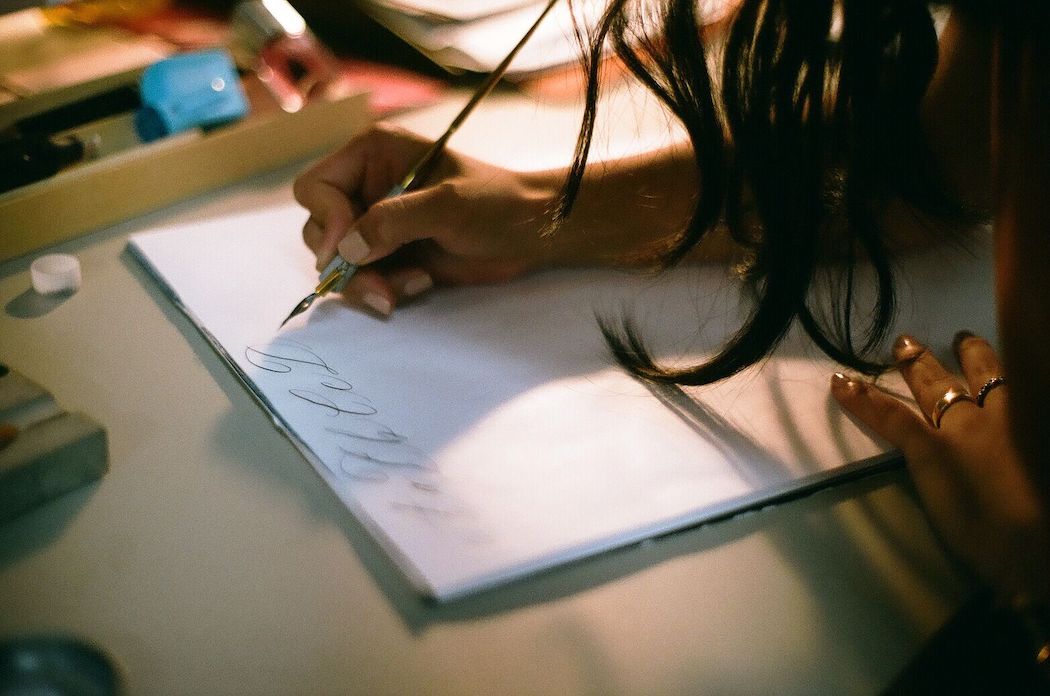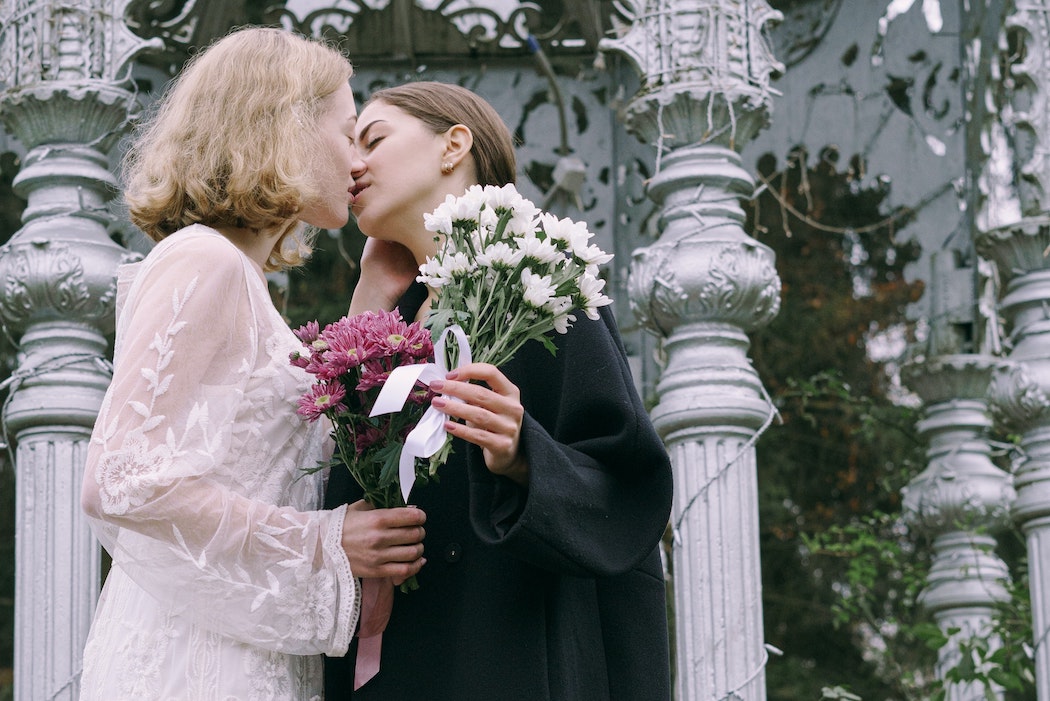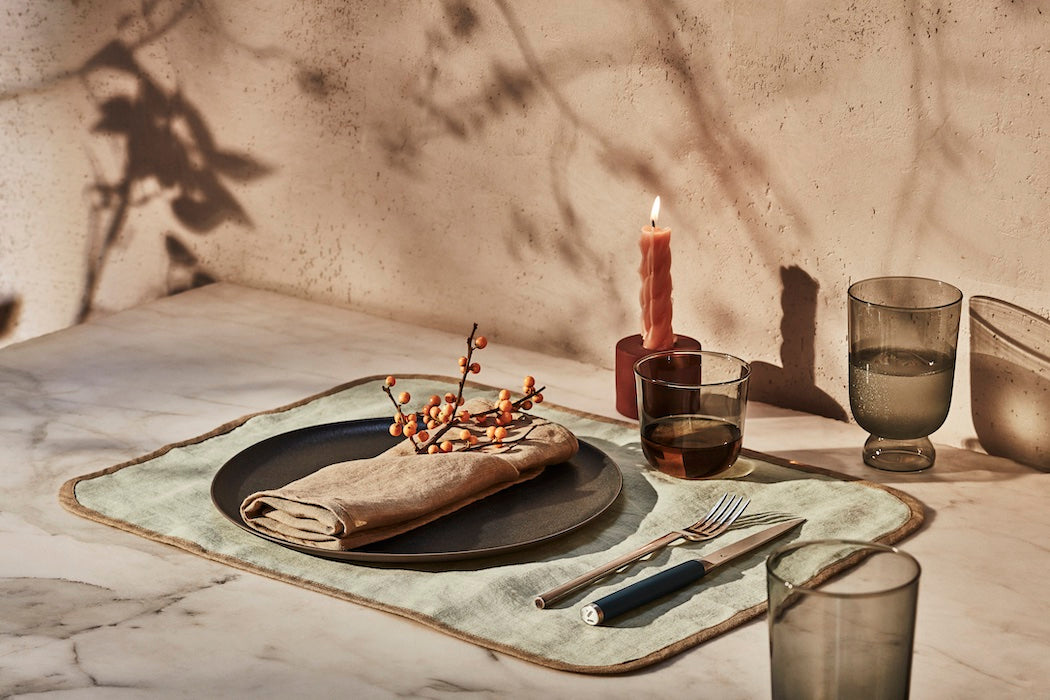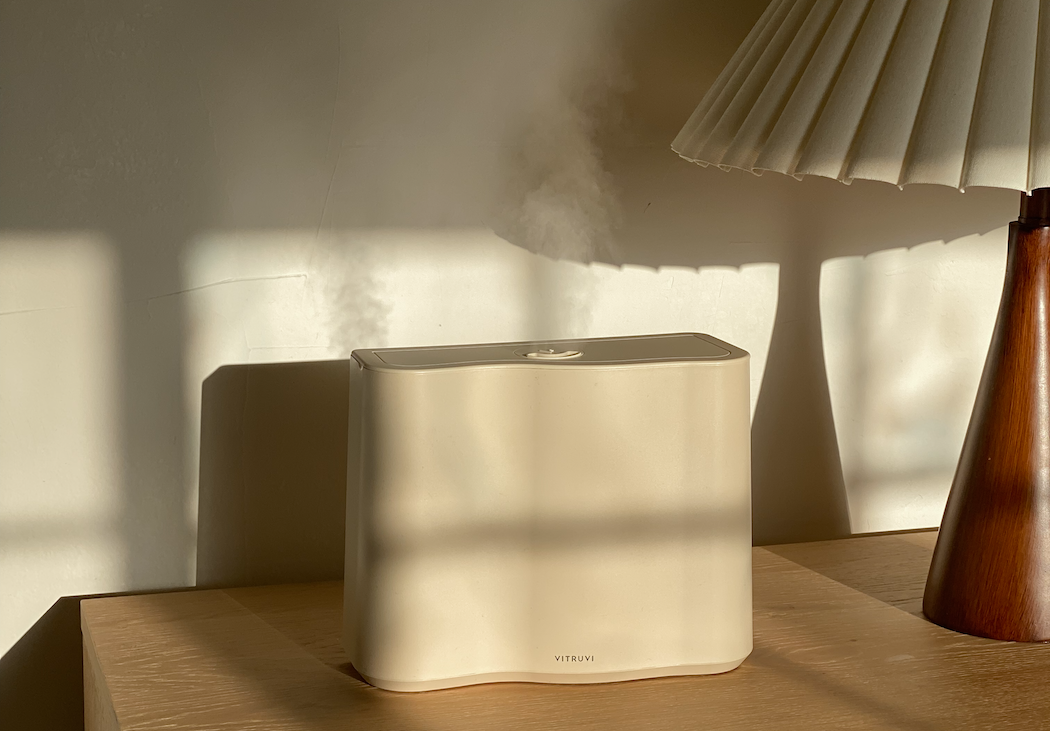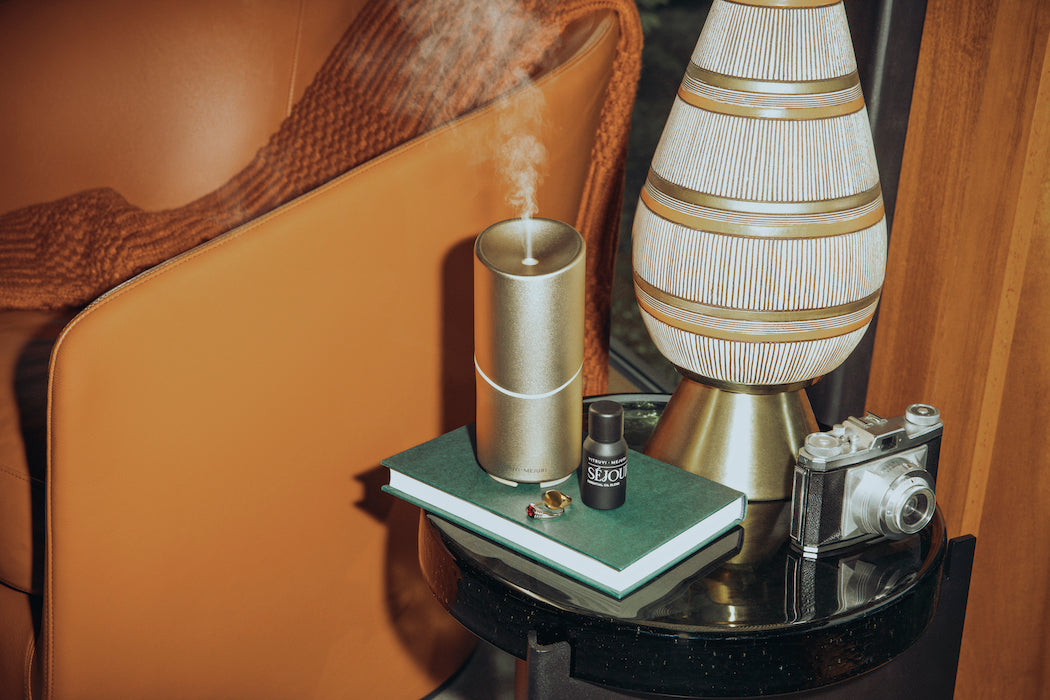When Christina Luo started Fox & Flourish in 2013, she didn’t expect that calligraphy—a practice with roots stretching back millennia—would wind up playing such a defining role in her life.
She works in a recognizable style: effortless, modern, perfect imperfection that recalls, in part, the gestural aspects of Chinese and Japanese ink landscapes. Her business, which began as a hobby, quickly grew into an internationally-renowned calligraphy and branding studio, creating works for the likes of Gucci and Tiffany & Co., and hosting beginner workshops in her home of Vancouver.
Still, while she’s always been artistically-minded, calligraphy wasn’t Luo’s first love. “I wanted to be a graffiti artist as a child,” she says with a laugh, knowing full well, even in grade school, that this was outside the law. Recently, though, Luo partially realized this childhood dream as part of Vancouver Mural Festival’s #makeartwhileapart, creating an uplifting Main Street mural with designer Anita Cheung to help lift spirits during the coronavirus pandemic. That bubbly, graphic lettering, Luo reflects via video chat, reminded her about the importance of exploring the gamut of calligraphy techniques—and of bucking the pressures of traditional calligraphic practice, especially if you’re a beginner.
What was the biggest challenge for you when you got started with calligraphy?
My biggest challenge was actually the tools. When I was getting started, Skillshare was just beginning to take off, and I signed up for a calligraphy class with an expert just so I could get access to the supplies list. This is why I started our Fox & Flourish workshops, too: so I could give our attendees the right supplies.
The other challenge I struggled with was finding my own style of calligraphy. I tried to differentiate myself in the beginning by working in this specific sort of modern calligraphy, which was very popular at the time, but that meant that I didn’t often work in other styles. This is compounded by the history of calligraphy, which is thousands of years old. The Old Guard would have newcomers to the practice think there are only a few correct ways to execute calligraphy—it took a long time for me to shake that feeling.
How important are calligraphy tools of the trade? What are your current favourites?
There are two schools of thought on this. Some people will adamantly reject the idea that the specific tools you use make a difference. There are people out there executing gorgeous calligraphy with Crayola markers.
But for me, I think the tools you use are very important, partially because I find learning to use them really inspiring. I love to see my beautiful collection of pens and pen holders, and I love the selection process of choosing the perfect tool for a specific project. I really feel like the tools are the crux of the creation.
Name names—what calligraphy tools would you recommend for beginners?
Sumi ink is a mainstay in calligraphic practice, because it is such a rich pigment and is really smooth. And I knew I wanted to include a Japanese drawing nib in our Fox & Flourish Essential Modern Calligraphy Kit because many nibs are so delicate that if you breathe too hard, you’ll snap them. But the Japanese nibs have a nice amount of flex and are sturdy enough to last through the trial and error of learning calligraphy.
My other favourite tools come from Australia. One of my favourites is called the Moblique pen holder from Luis Creations, which transforms a straight pen holder to an oblique one with a simple attachment. As a bonus, the top screws off, creating storage for one to two nibs—much like how you’d store lead in a mechanical pencil. And if you want to get fancy, I love Soap, also from Luis Creations, which uses magnets to continuously stir your ink when you’re working with pigments like gold. It looks like a cute little science experiment, and I love it.
What are your favourite words or designs to hand-letter, and why? (As in: what if I don’t know what to write?)
Oh, I have lots. I was listening to the podcast Las Culturistas, which has a segment called “I Don’t Think So, Honey!”—which I love. I practiced that line over and over. I usually work with—I’m a bit embarrassed to say it, but—Tumblr poetry. I also practice nail polish swatch names, or colour swatch names. Sometimes I’ll use a colour swatch itself and just rewrite its own name on top of it. The same goes for song lyrics: just words or sentences that strike me as beautiful or funny, really.
What was the toughest aspect of calligraphy for you to learn?
Even to this day, it’s writing in a straight line. This is the high-tech aspect to this otherwise low-tech practice, which is that it’s so hard to write in a straight line—especially when you’re working with a blank canvas, or an odd shape like a round perfume bottle.
I have different technologies that I use to solve this problem. For light paper, I use a light table so I can see guidelines through the sheet I’m working on. If you’re using thin paper, you can just use a darker guideline sheet underneath and you should be able to see through it.
People will also truly just use something like a laser level from Home Depot, especially when working with very dark paper. I definitely recommend getting started with pencil guidelines on your paper if you’re really wanting to hit that straight line. But otherwise, just know crooked lines happen to the best of us.
What would you recommend for people just beginning to undertake a calligraphy practice? What has kept you going?
As important as it is to find that one style that represents and defines your practice, it’s also super important to keep a variety within your practice. Continue to explore other styles so you don’t end up getting typecast into one role. This is something I’m in the process of breaking out of.
I feel like I’m toeing a line, and I’ve always felt this way. As soon as I started doing contemporary, more modern calligraphy, I put myself in a camp that wasn’t traditional. In kind with the Old Guard-New Guard traditions of calligraphy, this basically meant I had to be revolting against the traditional styles of calligraphy; this is the only way it made sense to me at the time.
I realized that rather than adhering to one or the other, it was more important to create my own style altogether. There’s no one right way to do calligraphy; what’s important is that you love your practice, otherwise you’ll never stick with it.
At the end of my workshops, we always take some time to just freestyle and do whatever we feel like doing. If you love frilly, loopy flourishes, do them! If you like a more casual, rougher look, do that. You really just need to follow your heart.
This interview has been edited and condensed.

